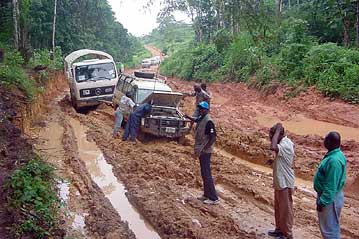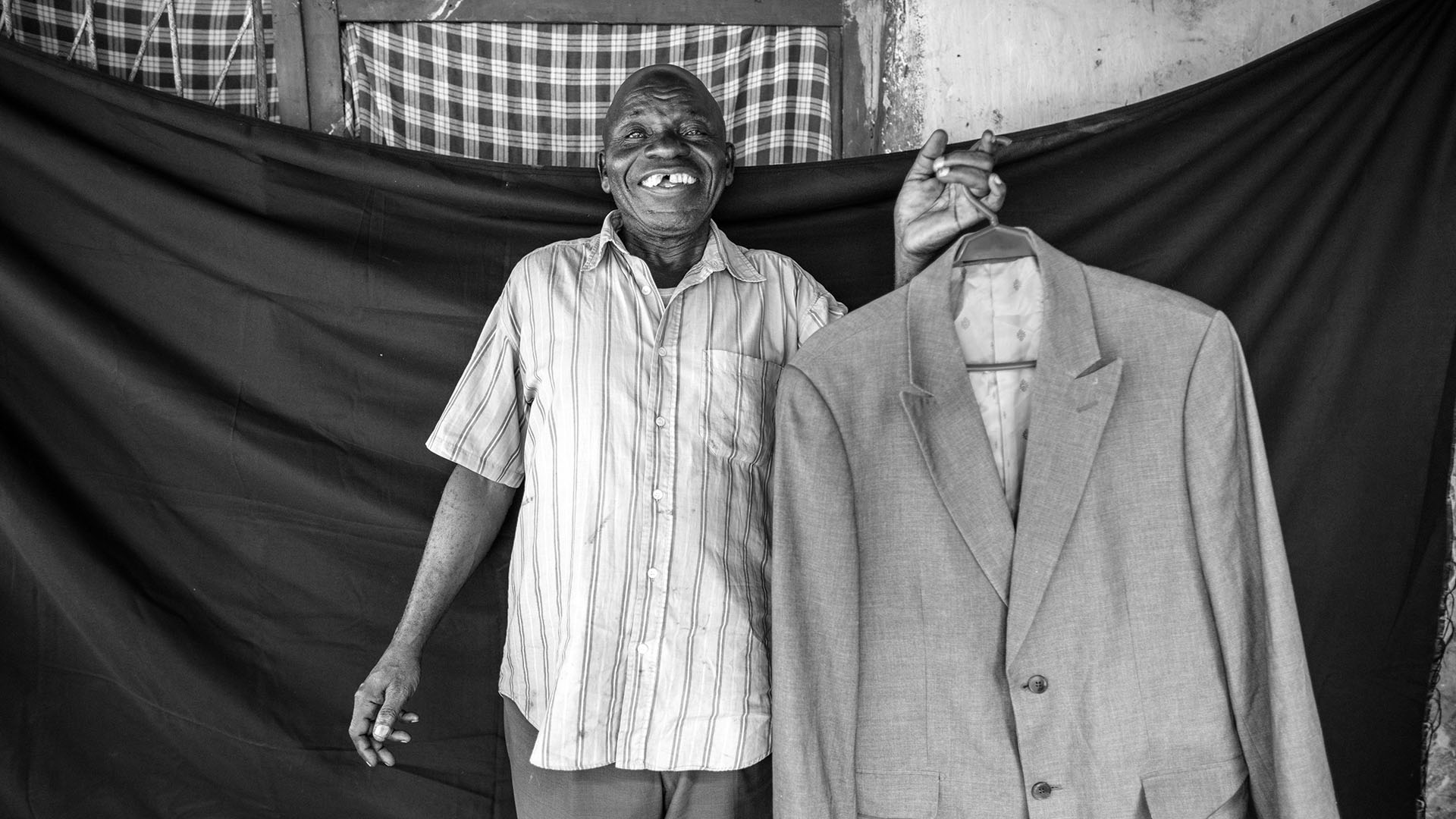UNHCR team finds factors that may muddy issue of return to Liberia
UNHCR team finds factors that may muddy issue of return to Liberia

LOFA, Liberia, July 25 (UNHCR) - How do you start life again in your hometown when the house you worked so hard to build over the years and all your hard-earned belongings have been destroyed? This is a dilemma facing Liberian refugees as they head back home to war-torn areas like Lofa county.
Lofa, one of the 15 counties in Liberia, shares borders with Guinea and Sierra Leone and was the most devastated county during Liberia's 14-year conflict. It is from this county that tens of thousands of Liberians fled between 2001 and 2003 for the refugee camps in Sierra Leone. Some 30,000 still remain in those camps today.
A team of two UNHCR staff members from Sierra Leone recently visited Lofa to see first hand how returnees are rebuilding their lives; and through detailed discussion with returnees, to find out exactly where key problems and challenges still lie in main areas of return that have been making it difficult for others in the camps to take the decision to come back home.
When 40-year-old Momoh Donoh and some of his friends left Largo refugee camp in Sierra Leone on a "go-and-see" visit to Lofa county, they discovered it was gradually returning from anarchy to normalcy. Donoh found his hometown of Kolahun much safer than he expected, and that UNHCR and other non-governmental organisations were assisting local and returnee communities.
"I have found out that UNHCR is not only in our refugee camps, but it is also here at home helping returnee communities," said the returnee.
Although Donoh and his friends are happy with security developments in Liberia, they have left their wives and children in Sierra Leone's camps. "We decided not to come with them yet because the children are going to school and we want the academic year to end. At the same time, some of us have rice farms which we would like to harvest."
Although UNHCR, UNICEF and other partners have rehabilitated hundreds of schools throughout Liberia, many schools in the rural areas of Lofa county have not yet been able to reopen.
Vamunya Fofanah was the chairperson of the Council of Elders in Largo, a camp where 70 percent of the residents are from Lofa. Now in his hometown of Kolahun, he explained that he has received assistance in the form of agricultural tools and seeds. "As a farmer, my concern had always been about how to start my farming activities without seeds and tools since we lost everything in the war. For me, the assistance from UNHCR in the area of agriculture is very much appreciated."
Many of his fellow returnees were not as lucky. Some said only those who had returned earlier in the year are engaged in agricultural activities.
"For most farmers, it has been a nightmare to carry out farming activities as seeds and tools distribution had already been done before they arrived," said Arthur M. Konneh, the former chairperson of Gondama camp. With the four-month food package from World Food Programme already exhausted by most returnees, the fear of food shortages has gripped some return areas.
In addition to farming activities, returnees in Kolahun and Foya are rebuilding their houses mostly using mud and wattle or mud bricks. Most people cannot afford the cost of cement, and with the pouring rains, the rebuilding process is a daunting task to say the least.
Medical care and education in Lofa and other return areas are free of charge where available, but many remote areas are yet to have access to these services. UNHCR is implementing over 1,500 community empowerment projects including rehabilitation of schools, health centres, roads, bridges, water and sanitation facilities, but given the levels of damage from years of war, the challenge ahead remains enormous.
In general, the visiting UNHCR team found that basic rehabilitation and infrastructural development still lag behind in remote areas inaccessible by car. The team could not visit important areas of return as a result, and resolved to make a series of follow-up visits.
Where roads exist, they are often in poor condition, exacerbated by the current rainy season. This has slowed down convoy movements and made the last stage of the journey - from the drop-off points to the actual home villages - risky and expensive for the returnees.

Given these circumstances, road conditions on the Liberian side are currently not conducive for convoys, said Ibrahima Coly, who heads UNHCR's office in Kenema, Sierra Leone. He said a convoy scheduled last weekend had been cancelled and added that a new schedule will follow only when the roads to Foya way station in Lofa can be made passable again, so that the refugees can continue to return in safety and dignity.
As of July 6 this year, 5,579 Liberian refugees had returned home from Sierra Leone in the ongoing facilitated voluntary repatriation that started in October 2004. Of these, about 2,467 have returned to Lofa county - less than 10 percent of the original residents who remain in camps. Although returnees are generally happy to be home, the rebuilding process in Lofa remains an uphill task for many.
By Sulaiman Momodu
UNHCR Sierra Leone








